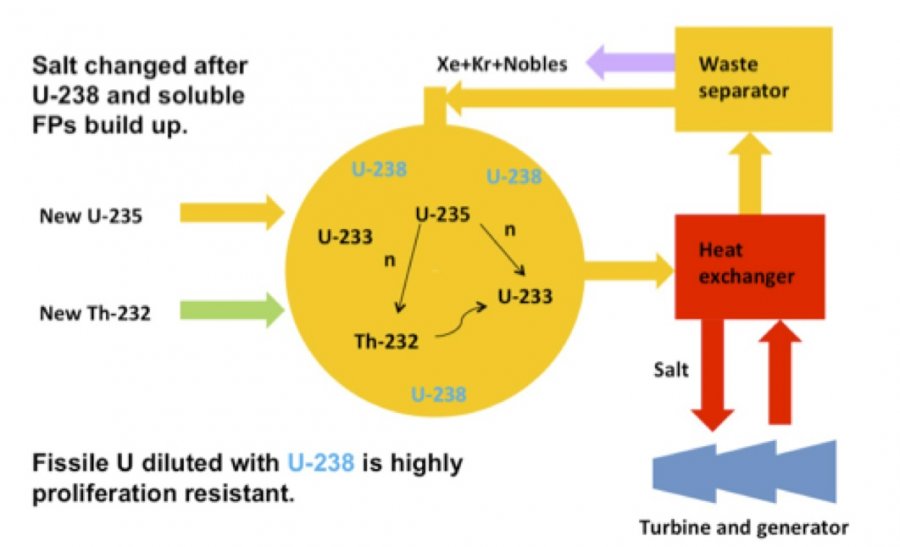Robert Hargraves on LFTR and its impact on The Energy Collective.
Low-cost, clean energy can help solve many world problems, from global warming to overpopulation to GDP stagnation. Nuclear power can be such an energy source, but the costs of solid fuel reactors continue to rise. Needed energy cost innovation may arise from a new technology -- liquid fuel nuclear reactors.
Global warming arises principally from CO2 emissions from coal combustion, rising as developing nations seek to increase prosperity. Proposed new coal-fired plants will double the world’s 1400 GW of coal-generated electricity. Repeated fruitless climate-treaty negotiations from Kyoto to Durban illustrate that nations’ economic needs trump global politics. Replacing coal combustion requires clean energy technologies cheaper than coal. Wind and solar sources are far too expensive and intermittent. Availability of advanced nuclear power cheaper than coal will dissuade nations burning coal for energy, through the immutable law of economic self-interest.
Rising populations in the poor nations are unsustainable, leading to more contention for natural resources. Affordable electric power can end energy poverty and develop lifestyles that include diminishing birthrates.
Petroleum is the second largest source of CO2 emissions. As petroleum-sourced fuels become more expensive, low-cost, high-temperature energy sources may be used to fabricate economic, carbon-neutral, synthetic vehicle fuels.
World GDP growth continues to drop as the availability of low-cost energy wanes; the fiscal crisis worsens with the loss of the ability to use economic growth to escape from mounting national debts. Cheaper energy sources may drive GDP growth sufficiently high to mitigate these consequences and avoid fiscal crises.
Nuclear power can be such an energy source. It is inexhaustible, emits no CO2, disturbs a tiny fraction of the land of coal mining, and has the smallest deathprint of any energy source. But despite improvements in solid fuel nuclear reactors, their costs continue to rise. Energy cost innovation may arise from a new technology -- liquid fuel nuclear reactors.
This article is presented in three parts
Part 1: Liquid Fuel Nuclear Reactors
Part 2: Energy cost innovation
Part 3: Global Impacts of Low-Cost Clean Energy

